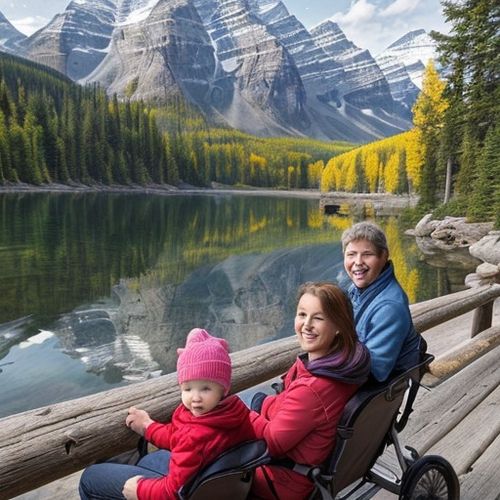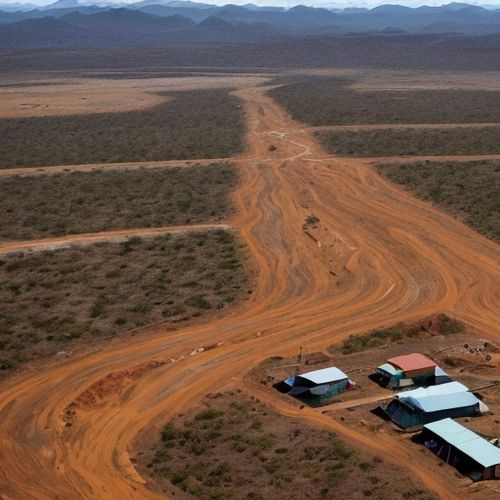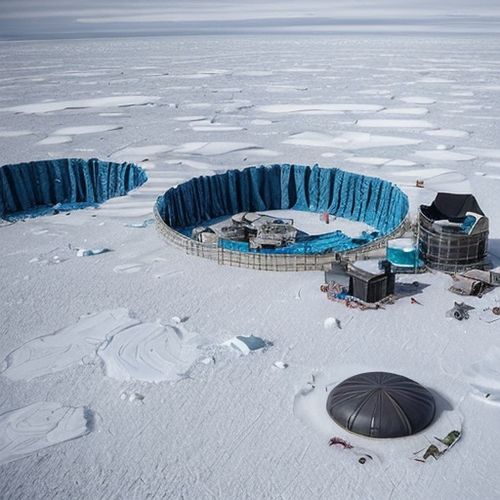The vast, frozen expanse of Antarctica presents unique challenges for those who brave its harsh environment. Among the most critical concerns is healthcare, where isolation and extreme conditions demand specialized medical solutions. The Antarctic expedition medical kit is not just a collection of bandages and painkillers; it’s a lifeline, meticulously designed to address the unpredictable and often life-threatening scenarios that can arise in one of the most remote places on Earth.
The Isolation Factor
Imagine being thousands of miles from the nearest hospital, with temperatures so low that even minor injuries can escalate into emergencies. This is the reality for scientists and support staff stationed in Antarctica. The continent’s isolation means that evacuation is often impossible for months at a time, especially during the winter when darkness and storms make travel perilous. A simple appendicitis case or a severe frostbite injury can become a matter of life and death without proper medical intervention. The medical kits used in these conditions must therefore be comprehensive, covering everything from trauma care to chronic disease management.
Unlike standard first-aid kits, Antarctic medical supplies are tailored to the specific risks of the environment. Hypothermia, for instance, is a constant threat. Kits include advanced warming devices and thermal blankets, alongside medications to stabilize core body temperature. Frostbite, another common issue, requires specialized creams and dressings to prevent tissue necrosis. The kits also account for the psychological strain of isolation, including antidepressants and sedatives to manage the mental health challenges that come with prolonged confinement in an extreme environment.
Customization for Extreme Conditions
Antarctic medical kits are not one-size-fits-all. They are customized based on the size of the team, the duration of the expedition, and the specific activities planned. A research team studying glaciers might prioritize trauma supplies for crevasses falls, while a station crew overwintering would need a broader range of medications to cover potential long-term health issues. Dental emergencies, for example, are surprisingly common in these settings, and kits often include temporary fillings and extraction tools to handle such situations.
The extreme cold also affects the integrity of medications and equipment. Standard pharmaceuticals can freeze or become ineffective, so Antarctic kits use specially formulated drugs that remain stable at sub-zero temperatures. Even something as simple as a saline solution must be freeze-resistant to be usable in emergencies. The packaging, too, is designed to withstand the cold, often using durable, insulated materials to protect the contents from the elements.
Training and Preparedness
Having a well-stocked medical kit is only part of the solution. Antarctic personnel undergo rigorous training to handle medical emergencies, as professional help is often days or weeks away. Many team members are trained in advanced first aid, and at least one person—usually a doctor or paramedic—is responsible for overseeing healthcare. This individual must be proficient in everything from suturing wounds to administering intravenous fluids, often relying on telemedicine support from specialists back home.
Simulations and drills are a regular part of life on the ice. Teams practice responding to scenarios like severe burns, cardiac arrests, and even psychological breakdowns. The goal is to ensure that when an emergency strikes, everyone knows their role and can act swiftly. The medical kits are integrated into these drills, with team members familiarizing themselves with the location and use of every item. This level of preparedness can mean the difference between life and death in a place where mistakes are not easily forgiven.
Innovations in Polar Medicine
The challenges of Antarctic healthcare have driven innovations in remote medicine. Telemedicine, for instance, has become a cornerstone of polar medical support. High-definition cameras and satellite links allow doctors thousands of miles away to guide on-site personnel through complex procedures. Some stations are even experimenting with portable diagnostic tools like ultrasound machines, which can be operated remotely by specialists to assess injuries or illnesses in real time.
Another breakthrough is the use of telepresence robots in larger stations. These devices, equipped with screens and cameras, enable off-site physicians to "walk" through the medical bay, interact with patients, and provide consultations as if they were physically present. Such technologies are revolutionizing polar healthcare, reducing the need for risky evacuations and ensuring that even the most remote teams have access to expert care.
The Human Element
Beyond the equipment and training, there’s an undeniable human element to Antarctic medical care. The psychological toll of isolation can be as debilitating as any physical injury. Medical kits often include items to support mental well-being, from stress-relief supplements to journals for self-reflection. Team bonding activities are encouraged, and the medical staff plays a key role in monitoring the emotional health of the group.
Stories from the ice reveal the resilience and ingenuity of those who call Antarctica home, even temporarily. There are accounts of makeshift surgeries performed in blizzards, of teams rallying to support a member in distress, and of the quiet determination that defines life at the bottom of the world. The medical kit, in many ways, symbolizes this spirit—a testament to human adaptability in the face of nature’s harshest challenges.
As climate change and scientific interest drive more expeditions to Antarctica, the importance of these medical kits will only grow. They are not just boxes of supplies but carefully curated survival tools, embodying the lessons learned from decades of polar exploration. For those who venture into the white silence of the continent, the medical kit is a silent guardian, a reminder that even in the most unforgiving place on Earth, humanity finds a way to endure.

By Grace Cox/Apr 14, 2025

By Emma Thompson/Apr 14, 2025

By Daniel Scott/Apr 14, 2025

By Rebecca Stewart/Apr 14, 2025

By Emily Johnson/Apr 14, 2025

By Megan Clark/Apr 14, 2025

By Emma Thompson/Apr 14, 2025

By Grace Cox/Apr 14, 2025

By Christopher Harris/Apr 14, 2025

By Joshua Howard/Apr 14, 2025

By Noah Bell/Apr 14, 2025

By Grace Cox/Apr 14, 2025

By Joshua Howard/Apr 14, 2025

By Victoria Gonzalez/Apr 14, 2025

By Grace Cox/Apr 14, 2025

By Christopher Harris/Apr 14, 2025

By Lily Simpson/Apr 14, 2025

By Laura Wilson/Apr 14, 2025

By Michael Brown/Apr 14, 2025

By Noah Bell/Apr 14, 2025